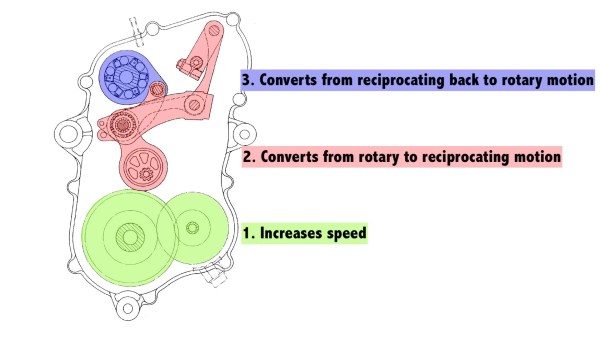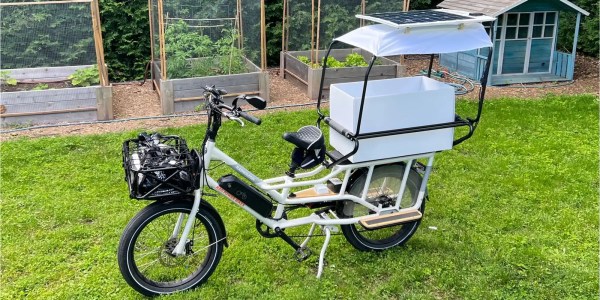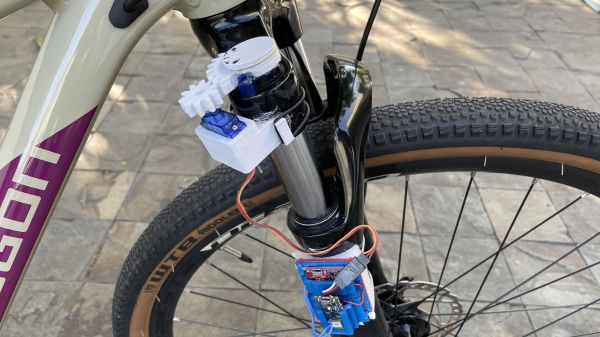Wheeled bikes are efficient machines, and most cycling speed and distance records are held by them. However, [The Q] has a taste for weirder creations that amuse perhaps more than they serve as viable transportation. His latest experiments revolve around tracked propulsion methods.
The build is a wheelless bike that relies on long thin tracks mounted to a mountain bike frame. The tracks carriers are fabricated using steel box section fitted with cogged rollers. The tracks themselves are made using a pair of bicycle chains joined with welded steel bars. They’re fitted with slices of rubber cut out of traditional bike tires for grip. The rear track is driven from the bike’s pedals, while the front is merely left to run freely.
By virtue of its wide, flat tracks, the bike actually stands up on its own. It’s capable of riding in a straight line at slow speed, albeit relatively noisily. Steering is limited by virtue of the flat tracks, which don’t operate well at an angle to the ground. Since the tracks only contact the ground at a point, too, the bike has very high ground pressure, which would make it likely to sink into anything less solid than asphalt.
The build is relatively similar to [The Q]’s previous efforts to build a supposedly square-wheeled bike. What we’d really love to see at this point is a tracked bicycle that actually made the best of the technology – by being both swift and capable of crossing soft, marshy terrain. Video after the break.
Continue reading “Rubber Tracked Bicycle Is Horribly Inefficient”


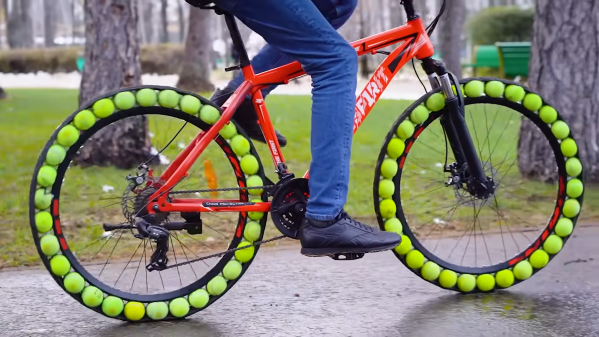
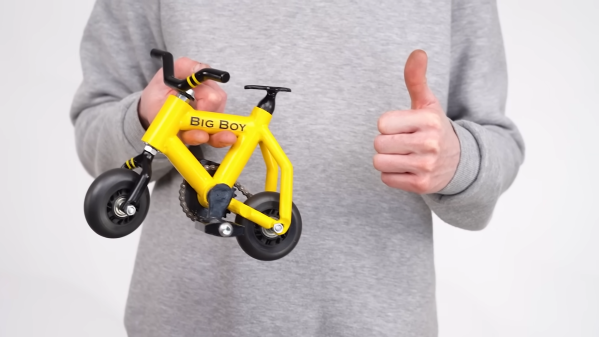
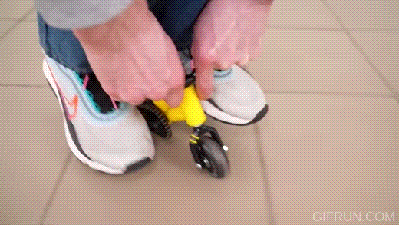 The build starts by customizing a rollerblade wheel to act as the driven rear wheel of the bike. It’s fitted with a tiny sprocket allowing it to be chain driven. Welding some steel tubes then nets a small diamond-layout bike frame. It’s fitted with a chain ring, pedals, and steering assembly just like a full-sized bike, just in absolute miniature.
The build starts by customizing a rollerblade wheel to act as the driven rear wheel of the bike. It’s fitted with a tiny sprocket allowing it to be chain driven. Welding some steel tubes then nets a small diamond-layout bike frame. It’s fitted with a chain ring, pedals, and steering assembly just like a full-sized bike, just in absolute miniature.